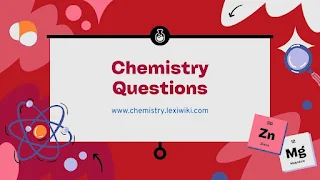Questions about Nuclear Fusion
Nuclear Fusion – Multiple Choice Questions
1. What is nuclear fusion?
A) The splitting of a heavy nucleus into lighter nuclei
B) The joining of two light nuclei into a heavier nucleus
C) The decay of a radioactive isotope
D) The absorption of neutrons by atoms
E) The ionization of atoms due to heat
-- Ads --
2. What is the main environmental advantage of fusion over fossil fuels?
A) It releases more nitrogen
B) It produces more soot
C) It doesn’t emit CO₂
D) It requires more land
E) It releases methane
3. What is the primary fuel for nuclear fusion in stars?
A) Uranium-235
B) Deuterium and Tritium
C) Plutonium-239
D) Helium-4
E) Carbon-12
4. In which environment does nuclear fusion naturally occur?
A) Inside nuclear reactors on Earth
B) In the Earth's core
C) In stars such as the Sun
D) In volcanic activity
E) In radioactive ores
5. What is a major challenge in achieving controlled nuclear fusion on Earth?
A) Lack of suitable fusion fuels
B) Emission of greenhouse gases
C) Controlling radioactive waste
D) Reaching the extremely high temperature and pressure
E) Lack of uranium
6. Which condition is not required for nuclear fusion?
A) High pressure
B) High temperature
C) Presence of neutrons
D) Presence of light nuclei
E) Sufficient confinement time
7. Which force must be overcome for nuclear fusion to occur?
A) Gravitational force
B) Frictional force
C) Magnetic force
D) Strong nuclear force
E) Electrostatic repulsion
8. What does the Sun primarily use in its fusion reactions?
A) Helium and carbon
B) Hydrogen nuclei
C) Uranium and plutonium
D) Neutrons and electrons
E) Oxygen and nitrogen
9. What is a common by-product of a hydrogen fusion reaction?
A) Carbon dioxide
B) Oxygen
C) Helium
D) Hydrogen peroxide
E) Tritium
10. Why is fusion considered a cleaner source of energy than fission?
A) It creates more electrical energy
B) It produces no energy loss
C) It doesn't require water
D) It generates minimal radioactive waste
E) It doesn’t produce helium
11. Which of the following fusion fuels is the easiest to fuse?
A) Helium and carbon
B) Uranium and thorium
C) Deuterium and tritium
D) Carbon and oxygen
E) Neon and hydrogen
12. What type of reactor is being developed to achieve nuclear fusion on Earth?
A) Fission reactor
B) Fast breeder reactor
C) Tokamak
D) Cyclotron
E) Pressurized water reactor
13. What is the major scientific project aiming to demonstrate fusion energy?
A) CERN
B) ITER
C) NASA
D) LHC
E) Apollo
14. How does nuclear fusion release energy?
A) By converting energy into mass
B) By electron movement in orbitals
C) By splitting atoms
D) By converting mass into energy
E) By breaking chemical bonds
15. Which element is commonly formed as a result of fusion in the Sun?
A) Oxygen
B) Hydrogen
C) Helium
D) Uranium
E) Carbon
16. What is the Lawson criterion related to?
A) Predicting nuclear decay
B) Balancing redox equations
C) Conditions for net energy gain in fusion
D) Formation of neutron stars
E) Calculating isotope stability
17. What does "plasma" refer to in fusion research?
A) A gas of neutral atoms
B) A cold liquid gas
C) A superheated ionized gas
D) A neutron-rich liquid
E) An acidic fluid
18. Which device uses magnetic fields to contain plasma for fusion?
A) Geiger counter
B) Tokamak
C) Cyclotron
D) Cloud chamber
E) Calorimeter
19. Which of the following fusion fuels is naturally abundant in seawater?
A) Uranium
B) Tritium
C) Helium
D) Deuterium
E) Plutonium
Answer Key with Extended Explanations
1. B – Fusion is the process where light nuclei combine to form a heavier nucleus.
2. C – Fusion doesn't emit greenhouse gases like CO₂, unlike burning fossil fuels.
3. B – Deuterium and Tritium are primary fuels in experimental fusion; stars mainly use hydrogen isotopes.
4. C – Fusion occurs naturally in stars like our Sun.
5. D – The extreme temperature and pressure needed make fusion difficult to sustain on Earth.
6. C – Neutrons are a product, not a requirement, for initiating fusion.
7. E – Electrostatic repulsion between positively charged nuclei must be overcome.
8. B – The Sun fuses hydrogen nuclei (protons) into helium.
9. C – Helium is the main product of hydrogen fusion.
10. D – Fusion produces far less long-lived radioactive waste than fission.
11. C – The Deuterium-Tritium pair has the lowest temperature threshold for fusion.
12. C – A Tokamak is a donut-shaped reactor that uses magnetic fields to confine plasma.
13. B – ITER (International Thermonuclear Experimental Reactor) is a major global fusion project.
14. D – Fusion converts a small amount of mass into a large amount of energy (E=mc²).
15. C – Helium is formed from hydrogen nuclei in stellar fusion.
16. C – Lawson criterion defines the conditions for fusion to produce more energy than it consumes.
17. C – Plasma is a hot, ionized gas, essential for fusion reactions.
18. B – A Tokamak confines plasma using strong magnetic fields.
19. D – Deuterium can be extracted from seawater, making it widely available.
Dive into the groundbreaking science of neurotransmitters—your brain’s invisible architects—in Chemical Harmony: How Neurotransmitters Shape Our Lives (2025). This meticulously researched book reveals how serotonin, dopamine, GABA, and other brain chemicals silently orchestrate every aspect of your existence, from decision-making and relationships to mental health and emotional resilience.Click here to buy
Share Online!

